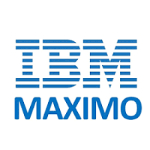TechnologyCounter provides genuine, unbiased real user reviews to help buyers make informed decisions. We may earn a referral fee when you purchase through our links, at no extra cost to you.
List of 15 Best Work Order Software
Showing 1 - 15 of 48 productsFieldproxy is a software designed to optimize and simplify field operations for businesses. With its user-friendly interface features, Fieldproxy revolutionizes the way businesses manage their field tasks, resulting in increased efficiency and produc...Read Fieldproxy Reviews
EZOfficeInventory is a complete solution to efficiently manage your organizations assets. With its user-friendly interface and powerful features, EZOfficeInventory simplifies inventory tracking and streamlines asset management processes. Say goodbye...Read EZOfficeInventory Reviews
UpKeep Asset is a solution for managing and tracking all your companys assets with ease. Say goodbye to the hassle of manual record-keeping and hello to a streamlined is a process with UpKeeps user-friendly interface. Simplify your asset management t...Read UpKeep Asset Reviews
GoCanvas, a revolutionary mobile platform that streamlines your entire data collection process. With its user-friendly interface and customizable features, GoCanvas simplifies the way you capture, share, and store information. Say goodbye to paper fo...Read GoCanvas Reviews
IBM Maximo is a leading enterprise asset management software that streamlines and optimizes business operations for organizations of all sizes. With its powerful tools for managing assets, tracking work orders, and analyzing data, Maximo helps busine...Read IBM Maximo Reviews
Ai Field Management is a solution for efficient and seamless management of your field operations. Say goodbye to manual processes and hello to advanced technology that streamlines your work, enhances productivity, and boosts profitability. Discover t...Read Ai Field Management Reviews
Field Force Tracker is a solution designed for businesses in need of efficient workforce management. This innovative software streamlines scheduling, dispatching, and tracking of field workers, helping companies to increase productivity and maximize...Read Field Force Tracker Reviews
Sockeye the innovative software solution that is revolutionizing the way businesses manage their data. With its user-friendly interface features, Sockeye streamlines data analysis and organization, making it the go-to choice for companies looking to...Read Sockeye Reviews
Vonigo is a software solution designed to streamline operations within your business. With its innovative, cloud-based platform, Vonigo offers a seamless is a way to manage scheduling, dispatching, and customer communication for a wide range of servi...Read Vonigo Reviews
AroFlo is a solution to streamlining your business operations and boosting productivity. With user-friendly features tools, AroFlo offers a seamless experience for managing tasks, team collaboration, and project management. Say goodbye to manual proc...Read AroFlo Reviews
Kickserv is a user-friendly service management platform designed to streamline and organize all aspects of your business, from scheduling and dispatching to invoicing and customer communication. With its intuitive interface and powerful features, Kic...Read Kickserv Reviews
Wintac is a software designed for the service industry that streamlines and simplifies daily operations. With its user-friendly interface, customizable features, is a scheduling and dispatch tools, Wintac is the go-to solution for small and medium-si...Read Wintac Reviews
Verizon Connect is a smart is a software that revolutionizes the way businesses manage their fleet operations. With its advanced technology and seamless integration, Verizon Connect simplifies fleet tracking, improves productivity and enhances overal...Read Verizon Connect Reviews
BlueFolder is a solution for managing your service business. With its user-friendly interface features, BlueFolder helps you streamline your workflow and improve overall efficiency. Keep track of your clients, assignments, and schedules all in one pl...Read BlueFolder Reviews
eMaint CMMS is a software that assists businesses of all sizes in managing and maintaining their assets with ease and efficiency. With its user-friendly interface and robust features, eMaint CMMS streamlines maintenance operations, increasing product...Read eMaint CMMS Reviews
- What Is Work Order Software?
- Top Reasons Why Businesses Need Work Order Software?
- What Are the Top Key Features of Work Order Software?
- What Are the Top Benefits of Work Order Software?
- What Are the Steps to Choose the Right Work Order Software?
- What Are the Types of Work Order Software for Different Industries?
- What Are the Technology Trends for Best Work Order Software?
- What Are the Deployment Options for Work Order Software?
What Is Work Order Software?
Work order software is employed for the purpose of monitoring and managing the various work requests and tasks that necessitate completion inside a manufacturing environment. The implementation of this technology has the potential to optimize production processes and ensure the accurate and efficient completion of jobs.
This software is utilized across various domains, including production, manufacturing, maintenance, and services. In the context of a production or manufacturing environment, the utilization of work order management software facilitates the systematic monitoring and management of many tasks that are essential for the successful completion of product manufacturing processes.
Additionally, it can be utilized to monitor and record the comprehensive expenses linked to each individual work, together with the projected and realized values associated with the overall procedure. The utilization of work order software can also yield advantages in the context of maintenance and service settings.
The utilization of this system facilitates the management of maintenance requests, service requests, client repair records, and other pertinent duties that necessitate completion. Additionally, it can be utilized for the purpose of monitoring and overseeing the components and resources required to successfully execute the task.
An online work order system is commonly an internet-based system that is accessed through a web browser. The system is typically characterized by a high degree of user-friendliness, facilitating rapid familiarization for personnel.
Moreover, it facilitates the allocation of work, monitoring of schedules, and provision of feedback in a more efficient manner for enterprises. In general, the utilization of work order software facilitates the optimization of task completion within a manufacturing or production environment.
Top Reasons Why Businesses Need Work Order Software?
1. Work order software enhances operational efficiency through process automation, hence minimizing the necessity for human paperwork and labor-intensive procedures.
2. Work order management software facilitates efficient asset tracking and management for enterprises, resulting in reduced expenses associated with maintenance and repair activities.
3. Standardizing the execution of duties contributes to the enhancement of customer service and productivity.
4. The cloud based work order system streamlines the process of generating and coordinating assignments assigned to subcontractors or vendors, hence enhancing their efficiency in completing their respective jobs.
5. The optimization of communication between a firm and its clients facilitates the efficient completion of orders and tasks within the designated timeframe.
6. The utilization of Online work order system enables firms to effectively assign resources, including personnel and commodities, to specific tasks, thereby optimizing their operational efficiency.
7. The utilization of this technology enhances the level of insight into the operational aspects of the business, facilitating the generation of analytics and reports that have the potential to optimize subsequent workflows.
8. Work order software serves to mitigate errors and mistakes by diminishing the reliance on papers and eliminating the necessity for human data input.
9. One effective strategy for maintaining high levels of customer satisfaction is to provide real-time updates and maintain a comprehensive database of previous customer encounters.
10. The best work order system enhances the level of responsibility inside a business by facilitating the efficient maintenance of records pertaining to the actions carried out by its personnel.
11. Enterprises have the potential to achieve time and cost savings in relation to administrative functions, including but not limited to invoicing, billing, and expense tracking.
12. Furthermore, this technology aids firms in effectively monitoring inventory levels, thereby providing them with the necessary data to enhance inventory management practices.
13. The implementation of workflow automation processes facilitates the reduction of labor expenses, while concurrently maintaining the provision of streamlined and consistent service.
14. Cloud based work order system offers organizations the necessary resources to effectively monitor and manage client requests, hence ensuring prompt and efficient resolution of these requests.
15. Finally, the utilization of a work order management system enables firms to remain current with regulatory obligations, ensuring their adherence to legal regulations.
What Are the Top Key Features of Work Order Software?
1. Automated Workflow & Task Management: Work order software commonly employs automated workflow and task management functionalities, enabling users to generate, schedule, and monitor jobs in real-time. Automation plays a crucial role in ensuring the accurate and timely completion of activities, hence enhancing the productivity and efficiency of staff members.
2. Reporting & Analytics: Work order management software provides businesses with the capability to utilize robust reporting and analytics capabilities, enabling them to promptly evaluate performance and utilize data-driven insights to develop more effective work order plans.
3. Resource Management: The adoption of the best work order system facilitates enhanced resource management capabilities for users, enabling them to effectively monitor labor and materials, discover potential cost reductions, and optimize resource allocation.
4. Inventory Control: The utilization of work order software enables firms to effectively manage inventory levels through the implementation of automated alerts. This feature facilitates prompt procurement of additional inventory, so ensuring the ability to meet client demands in a timely manner.
5. Mobile Access & Integration: Contemporary work order software has been specifically developed to facilitate mobile accessibility and seamless integration with various corporate systems. This enables users to acquire useful insights from any device and engage in real-time communication with all relevant parties involved.
6. Automated Communications & Alerts: Online work order system incorporates automatic communication and alert functionalities, which enable users to receive real-time notifications regarding task completion and resource replenishment requirements. This ensures the smooth and optimal functioning of operations, enhancing overall efficiency and effectiveness.
7. Document Management: Cloud based work order system facilitates the optimization of the document management procedure, enabling users to securely store and oversee orders, invoices, contracts, and other pertinent documents. This practice guarantees the continuous availability of pertinent papers whenever they are required.
8. Customizable User Interface: The work order management system incorporates a user interface that may be customized to accommodate the unique operations of firms, hence optimizing the efficiency of the system.
What Are the Top Benefits of Work Order Software?
1. Increased Efficiency: The utilization of work order software facilitates the optimization of the job ordering and tracking procedures, resulting in enhanced operational efficiency on a broader scale.
2. Automated Processes: The utilization of a work order management system facilitates the automation of job ordering and tracking procedures, resulting in a reduction in time allocated to manual processes.
3. Improved Communication: The utilization of an online work order system has the potential to enhance the precision of communication between personnel and clients, thereby guaranteeing a shared understanding among all involved parties.
4. Time Savings: The utilization of automated procedures in the best work order software has the potential to decrease the duration required for processing and fulfilling individual orders.
5. Cost Savings: The implementation of the best work order system processes can effectively mitigate the expenses incurred from manual processing by reducing labor expenditures.
6. Scalability: Work order software possesses the capability to be employed across businesses of varying sizes, including small, medium, and big enterprises, hence exhibiting a high degree of scalability.
7. Error Detection: The utilization of work order management system facilitates the identification of faults through the comprehensive documentation of all relevant information.
8. Improved Records: The utilization of cloud based work order system facilitates the generation of comprehensive and precise records, hence enhancing the efficacy of information management in the long run.
9. Easy to Use: Numerous work order system solutions are specifically built to prioritize user-friendliness, hence facilitating the utilization of the system by staff members.
10. Flexibility: The customization capabilities of work order management software enable it to effectively adapt to the specific requirements of any company, thereby surpassing the flexibility offered by manual processes.
What Are the Steps to Choose the Right Work Order Software?
1. Assess Business Needs: Conduct a comprehensive assessment of the business processes and tasks requiring attention, afterwards determining the most suitable candidates for effective management through the utilization of work order software.
2. Research Different Solutions: This analysis aims to compare several best work order software systems and subsequently refine the available options to identify the most appropriate ones.
3. Create A List of Requirements: Create a comprehensive inventory of essential features and functionalities that are required for the implementation of a work order system.
4. Contact Vendors: Contact different providers to gather information regarding their price structure, system capabilities, and support services.
5. Test the Final Shortlist: Select a pair of finalist solutions and conduct testing to assess their compatibility with your organizational workflows.
6. Make The Final Decision: Once all the candidate solutions have been thoroughly tested, it is now time to make a final option regarding which one to purchase and subsequently begin utilizing.
What Are the Types of Work Order Software for Different Industries?
The selection of work order software for diverse sectors is contingent upon the specific requirements and characteristics of each business. There are several prevalent types of software applications utilized in business settings.
These encompass Enterprise Resource Planning (ERP) systems, which serve to streamline diverse business processes, Customer Relationship Management (CRM) software, employed for monitoring and managing customer relationships, Human Resource systems, utilized for the management of employee information, and Contract Management software, which aids in the administration of customer contracts.
Furthermore, other sectors including healthcare, retail, manufacturing, hospitality, and logistics have used customized software solutions tailored to address their distinct requirements.
What Are the Technology Trends for Best Work Order Software?
The advancements in technology pertaining to work order software are progressing at a quick pace, with numerous software applications offering capabilities that save time, improve efficiency, and promote accuracy. Several significant technology trends can be observed in the realm of work order software.
1. Cloud-based/Software as a Service (SaaS): Both cloud-based and Software-as-a-Service (SaaS) solutions offer cost-effective alternatives for small organizations seeking to optimize the work order process. Cloud-based solutions enable the retrieval of work order data from any geographical location, facilitating real-time collaboration among work teams situated in diverse areas.
SaaS solutions have the advantage of not requiring businesses to install supplementary hardware or software, rendering it a very suitable option for small-scale enterprises.
2. Automation: The integration of automation is increasingly recognized as a crucial technological trend in the optimization of work order processes. Automated work order systems have the potential to alleviate laborious manual activities, hence enabling firms to allocate their resources towards more urgent and critical endeavors.
The utilization of automated the best work order software has the potential to enhance both accuracy and efficiency in the work order process.
3. Mobility: The significance of mobility as a technology trend in the context of a online work order system persists. Mobile work order management systems enable organizations to conveniently transmit, monitor, and oversee work orders while on the move.
This enables enterprises to promptly respond to work order requests and enhances employees' ability to obtain relevant information while being physically distant from the workplace.
4. Integrations: Numerous work order system programs provide the capability to be seamlessly linked with various other business applications, hence facilitating the optimization of work order operations.
Integrations, such as those pertaining to chat tools, email systems, automation processes, and inventory management, have the potential to enhance operational efficiency and optimize overall business outcomes.
5. Intelligent Business Logic: AI-driven work order management software solutions have the capability to leverage advanced business logic in order to expedite task completion and enhance precision.
This technology utilizes historical data from previous work orders to accomplish jobs and propose activities, so assisting organizations in enhancing their ability to anticipate client wants and meet customer service requirements more effectively.
What Are the Deployment Options for Work Order Software?
The available deployment choices for work order software are contingent upon factors such as the provider, company, and system configuration. In the realm of information technology, there exist three primary alternatives for deployment, namely on-premise, cloud-based, and hybrid deployment.
The installation of on-premise work order system occurs on the company's local server, where all data processing, storage, and transactions are conducted within the company's premises.
This particular deployment method is well-suited for organizations who have a high level of data management and security, have a requirement for specialized hardware, or exhibit a preference for the conventional 'on-site' approach.
Cloud-based work order software is deployed on a communal, internet-based platform or service provider, rendering it conveniently available to authorized people across various devices and geographical locations. This deployment option is most suitable for firms that prioritize the flexibility of remote access and have limited requirements for on-site personnel and gear.
Hybrid deployment refers to the implementation of the best work order software in a manner that combines both on-premise and cloud-based platforms. This particular choice is very suitable for enterprises seeking a blend of both security and accessibility.
The optimal choice of deployment strategy for a corporation will ultimately be contingent upon its unique set of needs, financial resources, and specific operational criteria.














